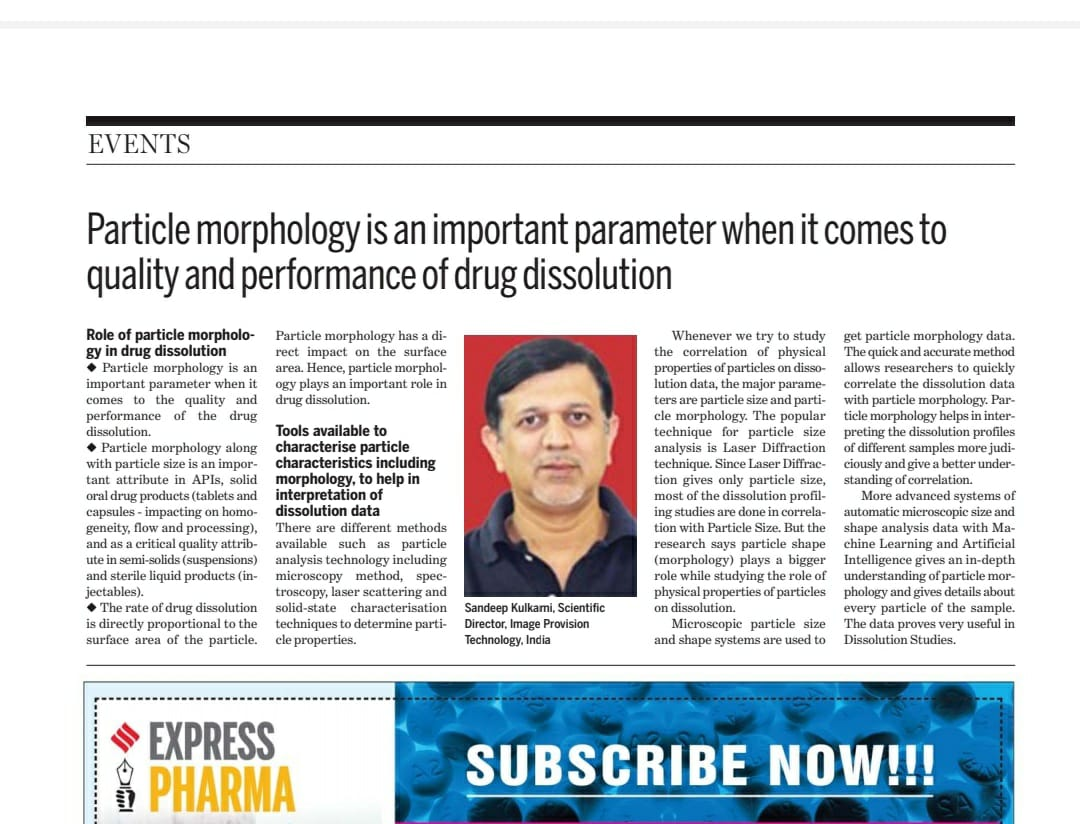Overview
Date : 19 Oct 2022
Sandeep Kulkarni, Founder & CEO, ImageProVision Technology, in an interaction with Express Pharma, talks about why particle morphology is an important parameter when it comes to the quality and performance of drug dissolution.
Here’s an excerpt from the wonderful conversation.
Role of particle morphology in drug dissolution
Particle morphology along with particle size is an essential attribute in APIs, solid oral drug products (tablets and capsules- impacting on homogeneity, flow and processing), and as a critical quality attribute in semi-solids (suspensions) and sterile liquid products (injectables).
The drug dissolution rate is directly proportional to the particle’s surface area.
Particle morphology has a direct impact on the surface area. Hence, it plays a vital role in drug dissolution.
What are the tools available to characterise particle characteristics including morphology, to help in the interpretation of dissolution data?
There are different methods available such as particle analysis technology including microscopy methods, spectroscopy, laser scattering and solid-state characterisation techniques to determine particle properties.
Whenever we try to study the correlation between the physical properties of particles on dissolution data, the major parameters are particle size and particle morphology. The popular technique for particle size analysis is the Laser Diffraction technique. Since Laser Diffraction gives only particle size, most of the dissolution profiling studies are done in correlation with the particle size.
But research says the particle shape (morphology) plays a bigger role while studying the role of physical properties of particles on dissolution.
Microscopic shape and size systems are used to get the particle morphology data. The quick and accurate method allows researchers to correlate the dissolution data with particle morphology data quickly. Particle morphology helps interpret the dissolution profiles of different samples more judiciously and gives a better understanding of correlation.
More advanced systems of automatic microscopic size and shape analysis data with Machine Learning and Artificial Intelligence give an in-depth understanding of the particle morphology and detail about every particle of the sample. This data proves very useful in Dissolution Studies.


